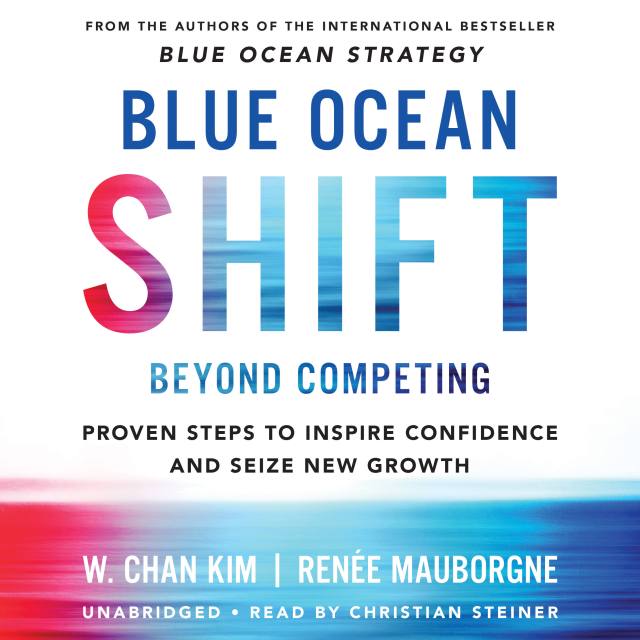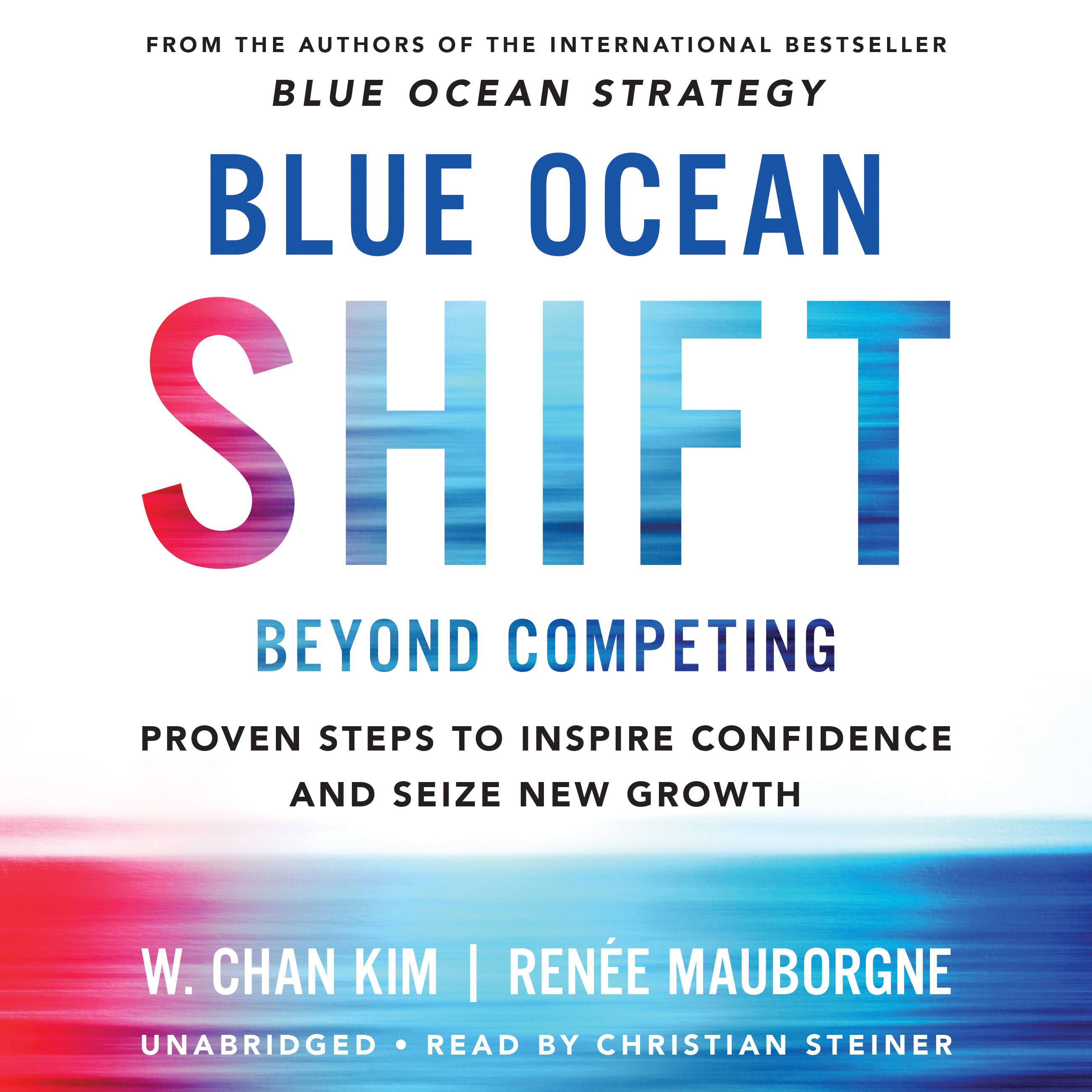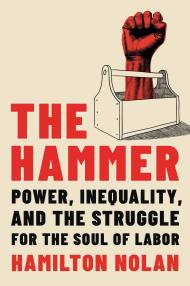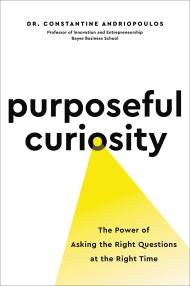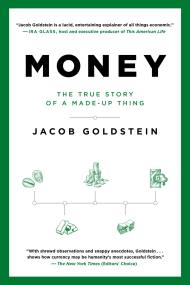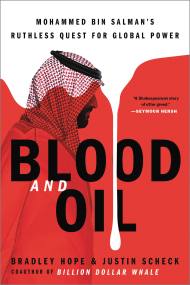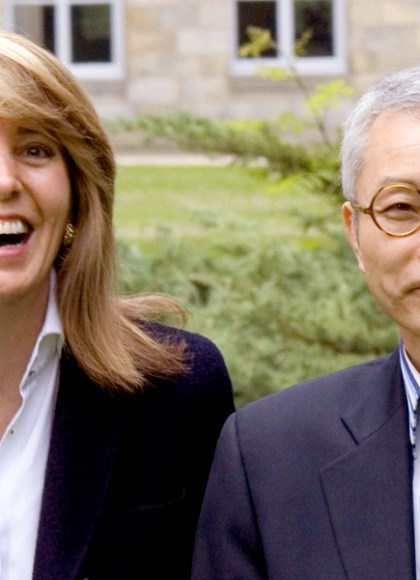Promotion
25% off sitewide. Make sure to order by 11:59am, 12/12 for holiday delivery! Code BEST25 automatically applied at checkout!
By clicking “Accept,” you agree to the use of cookies and similar technologies on your device as set forth in our Cookie Policy and our Privacy Policy. Please note that certain cookies are essential for this website to function properly and do not require user consent to be deployed.
Blue Ocean Shift
Beyond Competing - Proven Steps to Inspire Confidence and Seize New Growth
Contributors
By W. Chan Kim
Read by Christian Steiner
Formats and Prices
- On Sale
- Sep 26, 2017
- Publisher
- Hachette Audio
- ISBN-13
- 9781478940791
Price
$27.99Format
Format:
- Audiobook Download (Unabridged) $27.99
- ebook $16.99 $21.99 CAD
- Hardcover $28.00 $36.50 CAD
This item is a preorder. Your payment method will be charged immediately, and the product is expected to ship on or around September 26, 2017. This date is subject to change due to shipping delays beyond our control.
Buy from Other Retailers:
Drawing on more than a decade of new work, Kim and Mauborgne show you how to move beyond competing, inspire your people’s confidence, and seize new growth, guiding you step-by-step through how to take your organization from a red ocean crowded with competition to a blue ocean of uncontested market space. By combining the insights of human psychology with practical market-creating tools and real-world guidance, Kim and Mauborgne deliver the definitive guide to shift yourself, your team, or your organization to new heights of confidence, market creation, and growth. They show why nondisruptive creation is as important as disruption in seizing new growth.
Blue Ocean Shift is packed with all-new research and examples of how leaders in diverse industries and organizations made the shift and created new markets by applying the process and tools outlined in the book. Whether you are a cash-strapped startup or a large, established company, nonprofit or national government, you will learn how to move from red to blue oceans in a way that builds your people’s confidence so that they own and drive the process.
With battle-tested lessons learned from successes and failures in the field, Blue Ocean Shift is critical reading for leaders, managers, and entrepreneurs alike. You’ll learn what works, what doesn’t, and how to avoid the pitfalls along the way. This book will empower you to succeed as you embark on your own blue ocean journey. Blue Ocean Shift is indispensable for anyone committed to building a compelling future.
-
Named a Best Book of 2017 by Amazon
-
Winner of The Best Leadership and Strategy Book of 2017 by 800-CEOREAD
-
"Kim and Mauborgne have followed one blockbuster book with another. BLUE OCEAN SHIFT takes the groundbreaking principles of their original work and offers a smart, systematic plan to help any organization move from competing in existing markets to creating new markets altogether. You needn't be an entrepreneur or techie to take advantage of these insights. You just have to be willing to challenge the assumptions of your industry, ask fresh questions, and--get this--embrace your humanness."Daniel H. Pink, New York Times bestselling author of Drive and To Sell Is Human
-
"BLUE OCEAN SHIFT is great: Practical, useful, real-world."Inc.
-
"An exciting new book that synthesizes their experience in assisting with the implementation of Blue Ocean strategy....BLUE OCEAN SHIFT provides us with a comprehensive guide to enable any organization with the right mindset to launch and implement a Blue Ocean initiative."Forbes
-
"The challenge of any business is to grow in markets that are crowded and competitive, and to do it in a way that is intelligent, effective, and humane. In BLUE OCEAN SHIFT, you will find all of that and more as Kim and Mauborne guide you on a journey that will open your eyes to the untapped growth opportunities in your business, whether you are a startup, small business, or Fortune 500 company."Ram Charan, CEO and board advisor, New York Times bestselling author of Execution
-
"[A] stirring business primer...[BLUE OCEAN SHIFT] includes powerful real-life examples....This invaluable guide will be empowering to business-minded readers."Publishers Weekly
-
Starred Review: "While [Blue Ocean Strategy] helped to identify new avenues for strategic success, it fell short on providing the actual steps needed to jump from a crowded marketplace into the fabled blue ocean of the title. [BLUE OCEAN SHIFT], however, provides a clear process for business identifying opportunities and developing plans for change...This tide provides a course of action for readers of the authors' previous books and should find a large readership among all organizational levels. Highly recommended."Library Journal
-
"BLUE OCEAN SHIFTproves to be worth the wait. It is a practical, well-written guide to finding and exploiting blue ocean markets, informed by the experiences of companies and other organizations that have chosen to seek them out rather than compete toe-to-toe in established markets."Strategy + Business
Newsletter Signup
By clicking ‘Sign Up,’ I acknowledge that I have read and agree to Hachette Book Group’s Privacy Policy and Terms of Use
